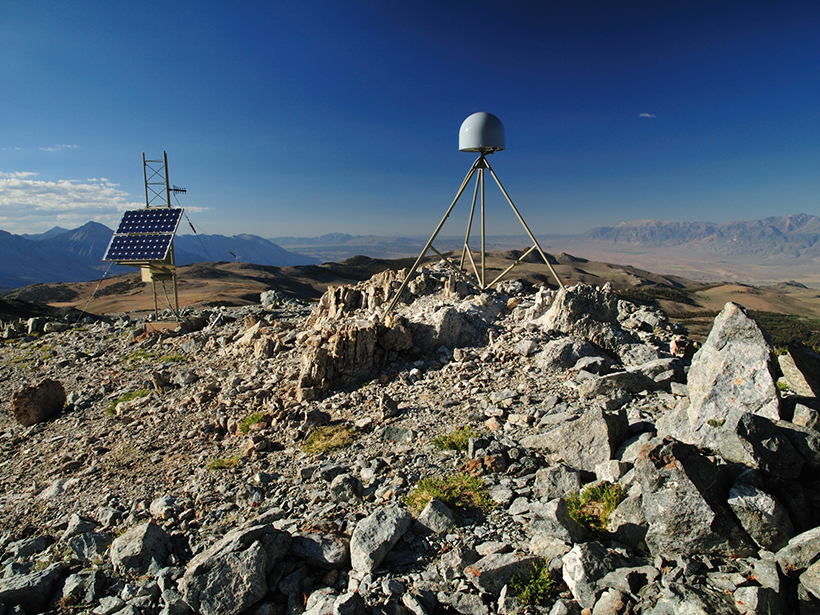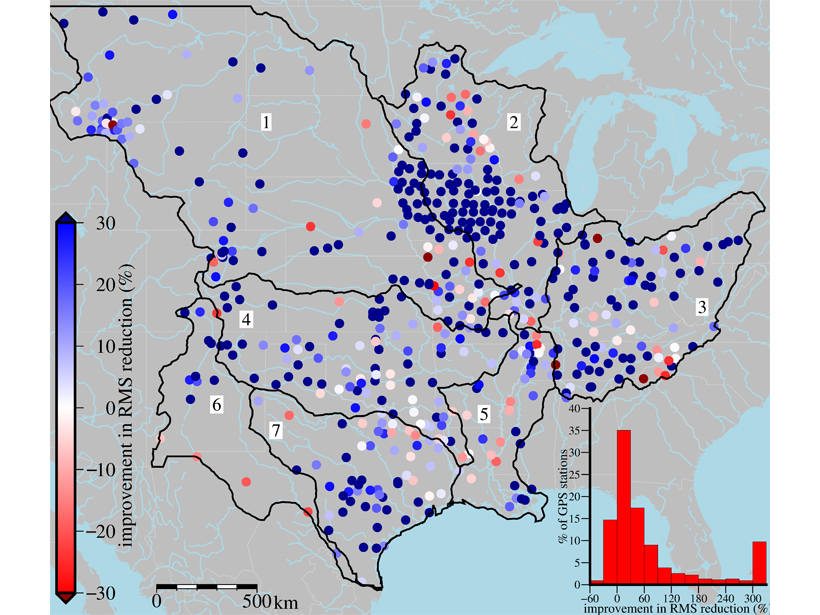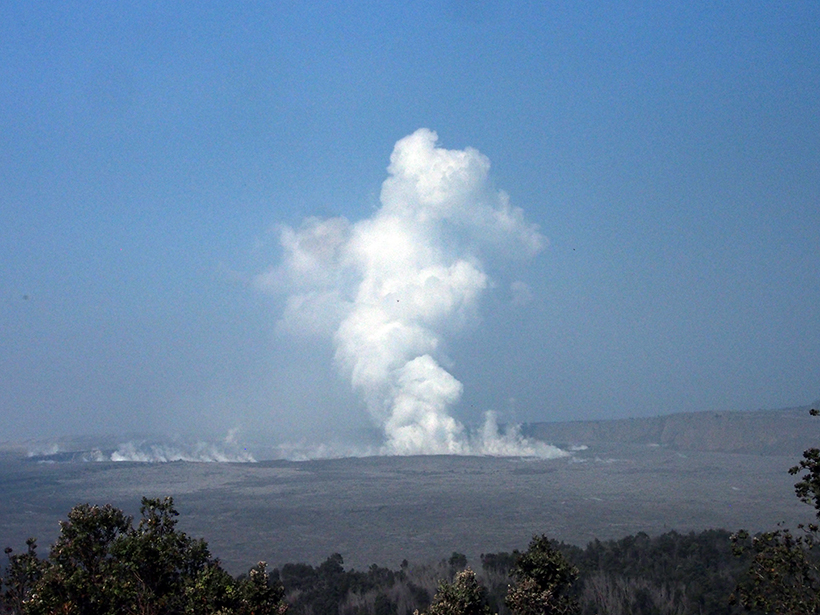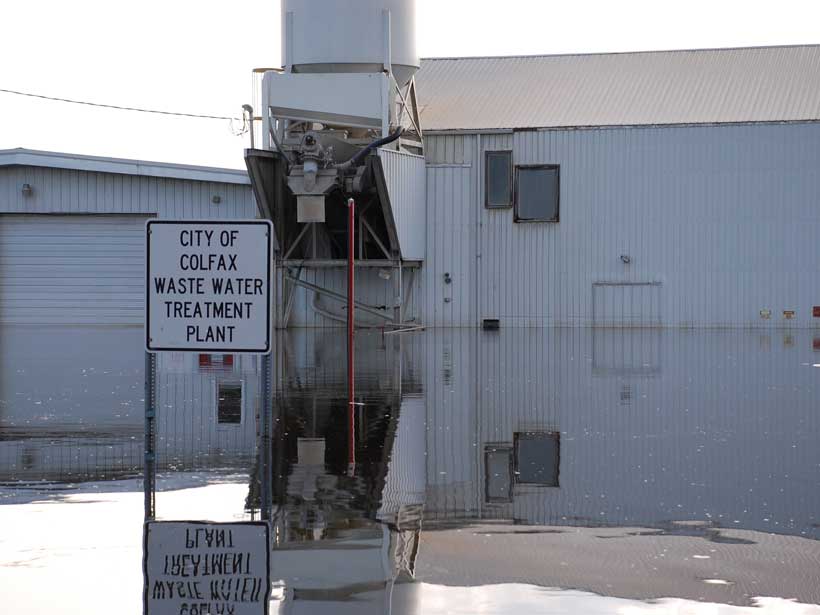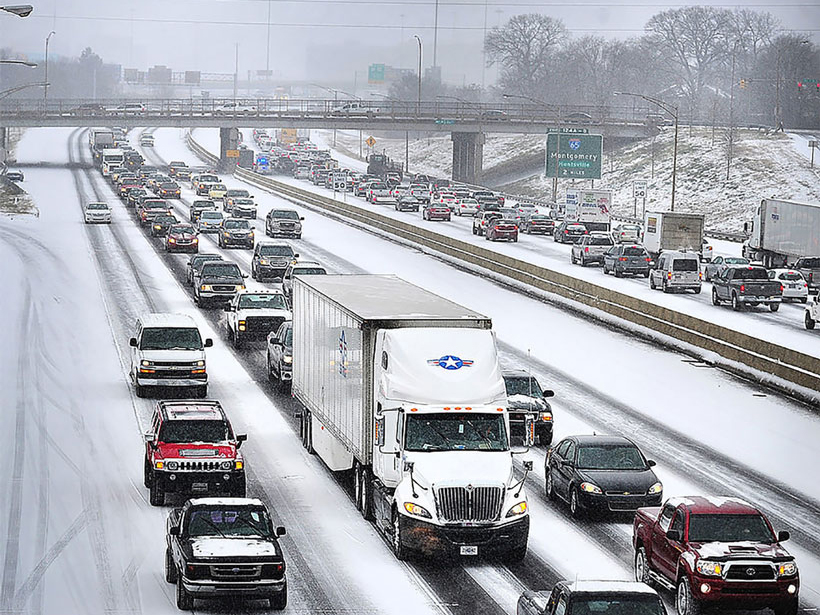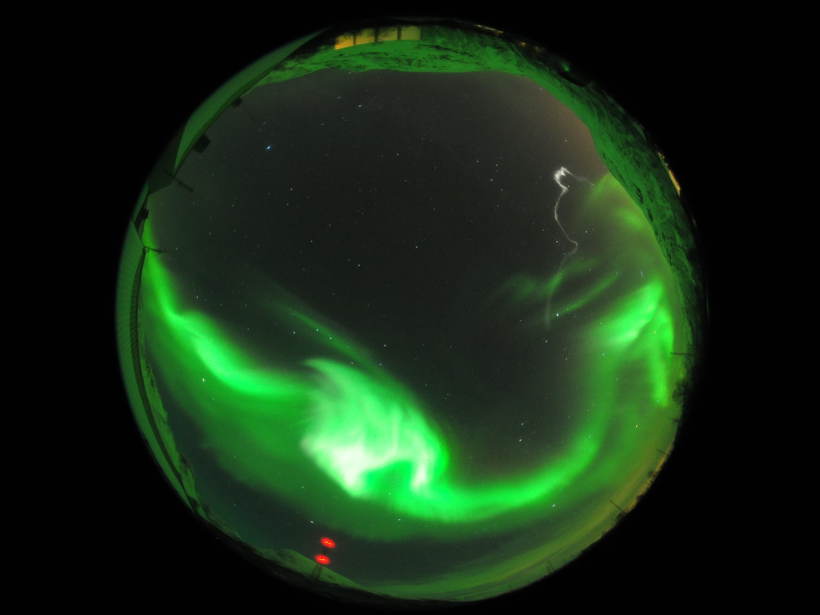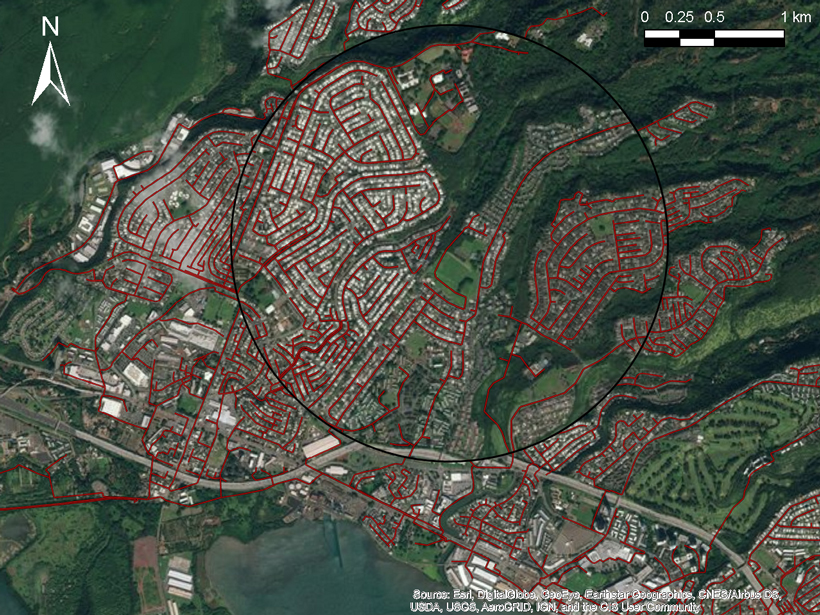More GPS stations, faster data delivery, and better data processing provide an abundance of information for all kinds of Earth scientists.
hardware & infrastructure
Bulging, Shrinking, and Deformation of Land by Hydrologic Loading
The deformation of continents by groundwater can be measured locally by GPS or detected from satellites, but more precisely monitored when measurements are combined with a hydrologic model.
Huge Spike in Quakes Badly Damages Kīlauea Observatory
Meanwhile, some scientists say that the 35-year eruption from the Pu‘u Ō‘ō vent has ended and that the flows since 3 May are a new eruption. Others take issue with this view.
Sea Level Rise Threatens Hundreds of Wastewater Treatment Plants
Untreated sewage could affect 5 times more people than direct flooding, a new study shows.
Snowfall Rates from Satellite Data Help Weather Forecasters
A new data product calculates snowfall rates from weather data beamed directly from several satellites, helping meteorologists provide fast, accurate weather reports and forecasts.
Sounding Rockets Probe the Northern Lights Above Norway
Scientists measure how the aurora affects winds in the upper atmosphere.
Recording Belgium’s Gravitational History
Instruments at Belgium’s Membach geophysical station set a new record for monitoring gravitational fluctuations caused by storm surges, groundwater fluctuations, and the Moon’s tidal pull.
Urban Sewers Evolve Similarly to River Networks
Like river systems, engineered drainage networks become increasingly fractal as they grow.
Sea Level Rise May Swamp Many Coastal U.S. Sewage Plants
Cities typically build wastewater treatment facilities in low-lying areas. A new national study identifies which plants are most vulnerable to coastal flooding.
Hurricanes Expose Vulnerabilities in Puerto Rico Seismic Network
Could overreliance on cell networks to transmit data leave instruments in the dark after the next storm hits?

